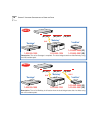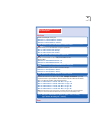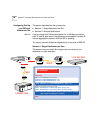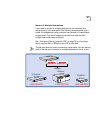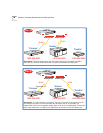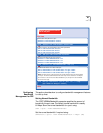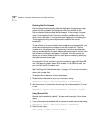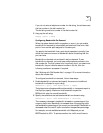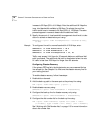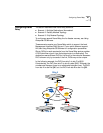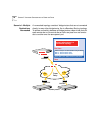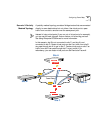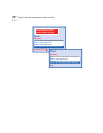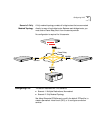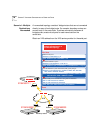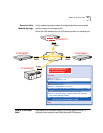
92 CHAPTER 7: ADVANCED CONFIGURATION OF PORTS AND PATHS
increase to 32 Kbps (50% of 64 Kbps). After the additional 64 Kbps line
is up, total bandwidth available is 128 Kbps. To activate the next line,
traffic would have to increase to 64 Kbps (50% of 128 Kbps). The same
process happens in reverse to deactivate the additional lines.
3 Specify the amount of time bandwidth management should wait to take
action to activate or deactivate a port using:
SETDefault !<port> -PORT DialSamplPeriod = <seconds>(0–300),
(0–300)
Example To configure a line with a normal bandwidth of 28.8 kbps, enter:
SETDefault !4 -PORT BODIncrLimit = 28.8
SETDefault !4 -PORT BODTHreshold = 50
SETDefault !4 -PORT DialSamplPeriod = 30, 60
Traffic must exceed 14.4 kbps for 30 seconds before an additional dial
path is activated. The additional dial path is deactivated when the rate
of traffic is less than 28.8 kbps for longer than 60 seconds.
Configuring Disaster Recovery
If the primary PPP line fails, the bridge/router can use a reserved dial-up
line as back-up. See Chapter 8 to fine-tune the disaster recovery line for
your routing protocol.
To enable disaster recovery, follow these steps:
1 Enable dial-on-demand.
2 Add the back-up path to the same port as the primary line using:
ADD !<port> -PORT PAths <port> [,<port>...]
3 Enable disaster recovery using:
SETDefault !<port> -PORT DialCONTrol = DisasterRcvry
4 Configure the back-up line for disaster recovery only using:
SETDefault !<path> -PATH DialCONTrol = DisasterRcvry
5 Configure the dial number list for the back-up line using:
ADD !<port> -PORT DialNoList “<phone no>” [Baud = <rate>
(1.2–16000)] [Type = Modem | Bri | Sw56] | [Pos = <number>]
See “Working with Dial Number Lists” on page 113 for more information
about dial number lists.



